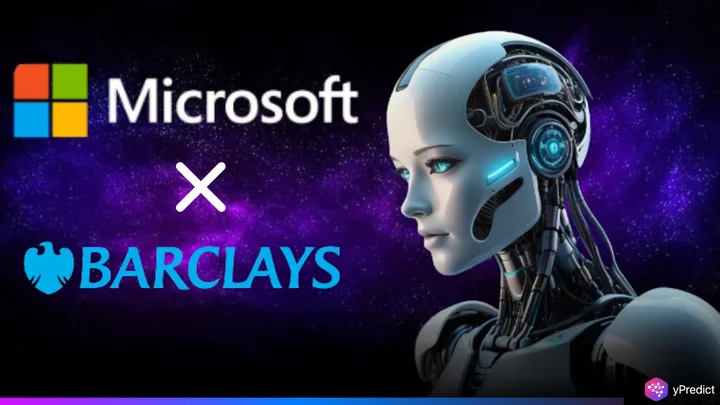
Microsoft has landed one of its biggest artificial intelligence (AI) contracts yet, securing a deal with UK-based bank Barclays. The bank agreed to buy 100,000 licenses for Microsoft Copilot, its AI assistant suite, as revealed during a company town hall on May 29. The move reflects Microsoft’s growing push to embed AI across business tools.
Company officials also said other corporate giants, including Accenture, Toyota, Volkswagen, and Siemens, now have over 100,000 Copilot users each. At US$30 per user monthly, the Barclays AI deal alone could be worth tens of millions. The news comes as Microsoft seeks to prove that AI investment is not just hype, but real business. Still, challenges remain. Many companies continue to roll out Copilot gradually, with staff training and internal adjustments slowing down full adoption.
Inside Microsoft’s Copilot AI Deal: How It Works in Big Companies
Microsoft Copilot is an AI-powered assistant designed to work within Office 365 applications like Word, Excel, and Teams. It helps employees draft emails, analyze data, and summarize documents, aiming to cut down on repetitive tasks. Microsoft says the tool boosts productivity by handling routine work, letting staff focus on higher-value tasks. The AI assistant is built with help from OpenAI, the creators of ChatGPT.
Copilot draws on large language models to generate responses based on prompts, context, and documents. “We’re focused on workforce adoption, not just sales,” said Microsoft CEO Satya Nadella at the internal meeting. The company says it closely tracks how many employees actually use the software. That’s a shift from older enterprise tech rollouts, where licenses were bought but often underused.
Big AI Deals, Real Results, and Lingering Hurdles in Corporate Rollouts
The Barclays AI deal is one of Microsoft’s largest known AI deployments to date. Yet while the numbers are big, company insiders and analysts stress that full adoption remains uneven. Many organizations are running small trials rather than equipping entire teams. Some employees are hesitant and unsure how AI fits their roles or how to trust its outputs.
According to IBM’s 2025 research, 42% of firms struggle with not having enough clean, useful data to train AI properly. Another 42% report a lack of internal expertise. This gap between buying and truly using AI tools remains a key issue. Even among Microsoft’s largest customers, real-world usage is gradual and cautious.
Meanwhile, Microsoft’s revenue from AI is growing fast. The company says its AI products and cloud infrastructure could bring in at least $13 billion this year. Still, Wall Street wants clearer proof that AI investments are delivering measurable business returns.
Executive involvement appears to be a turning point. McKinsey found that firms with C-suite leaders using AI directly were more likely to see strong results. Copilot’s deployment at scale, such as the 100,000 licenses at Accenture and Toyota, suggests top-level support is helping drive use.
Will AI Integration Outpace Workforce Readiness?
Microsoft’s push into AI reflects a wider trend among tech giants racing to lead the enterprise market. Yet behind the headlines and billion-dollar projections, firms face daily challenges. Training workers, managing risks, and proving business value take time and money. The Barclays contract sends a strong signal about AI’s future in finance.
However, it also underscores the gap between investment and impact. Questions remain about data quality, ethical use, and employee trust. As Microsoft weathers layoffs and internal restructuring, it is betting big on AI. Whether customers like Barclays turn early purchases into lasting change may decide how fast and how well AI becomes a workplace staple.





